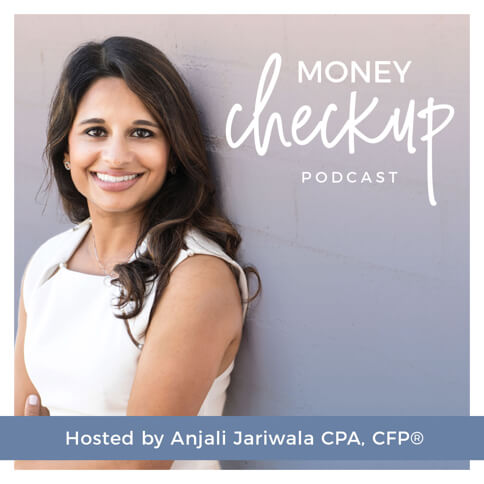Medicine is a hands-on profession. If illness or injury forces you to stop working in your specialty, you need a financial backup plan. That’s what disability insurance is for.
Many physicians obtain disability insurance policies during training and carry them into their careers. However, we don’t always read these policies as closely as we should, leaving risky or frustrating gaps in our coverage.
Stephanie Pearson, MD joined me on Money Checkup a few months ago to talk about the ins and outs of disability insurance. She is an OB/GYNE by training, but after a shoulder injury ended her clinical career, she began consulting about disability and life insurance for physicians. She recommends reviewing your current or potential private insurance policy for these common gaps.
Own occupation or specialty-specific coverage
As you begin looking for policies, note that there is no standardization of language in the insurance industry. Different insurance companies may have different definitions for the same terms, including “own occupation” and “total disability.” It’s essential to read the fine print in your disability insurance policy (or ask a trusted advisor to do so) to ensure you understand exactly what your coverage includes.
“Own occupation” or “specialty-specific” disability insurance policies cover the work you do on a day-to-day basis. With a true own occupation policy, if you can no longer do the work you currently do, you will be considered totally disabled — regardless of whether or not you can be gainfully employed in another occupation.
Not every policy is a true own occupation policy, however. Some are specialty-specific for a period of time, then broaden to any occupation. Others might be specialty-specific but define “total disability” as unable to do any job.
My family and I made this mistake. While my husband was in training, he purchased a disability insurance policy from an insurance agent who spent a day in the lounge at his hospital. After I became a financial planner, we reviewed his policy and found that it was an any-occupation policy, not a specialty-specific one — so it would not have covered us if he were no longer able to perform his specific job but could still work in another role. We corrected the policy, but it was costly to do so since we now live in California. It is better to get the policy correct the first time around.
Important riders
Partial or residual benefit
Illnesses and injuries that cause fatigue, such as auto-immune disease or early degenerative disease, may still let you work, but you may not be able to sustain the hours you used to. If you work as an independent contractor, that means you’ll earn less.
That’s when a partial benefit or residual benefit kicks in. It helps cover the difference between what you earned prior to disability and what you will be able to earn after your illness or injury.
Catastrophic benefit
A catastrophic benefit offers additional funds if you become unable to perform two or more of your activities of daily living without help, or if you become severely cognitively impaired — for example, after a stroke or traumatic brain injury. This benefit can help cover the costs of in-home healthcare or other unexpected services.
Future Increase Option (“FIO”)
Getting a disability insurance policy can be very intrusive. Insurance companies may take blood and urine samples, pull your pharmaceutical records, ask dozens of personal medical questions, and do whatever else they can to decide how likely you are to need their coverage. This process is called medical underwriting.
The Future Increase Option is the amount by which you can increase your monthly benefit without going through medical underwriting. Some carriers limit the FIO to a multiple of the base policy, while others allow you to increase to the max (usually $17,000 per month) without needing an FIO rider.
If you put your policy in place during training, it is good to anticipate what your income will be as an attending and ensure that your policy will keep up with your income. Otherwise, you may need a new policy that will require medical underwriting again, which may be problematic if you are older and not as healthy.
Cost of living adjustment (COLA)
Many disability insurance policies include cost of living adjustment (COLA) riders. This adjustment occurs if you collect on the disability policy to help keep it up with inflation. Some determine the adjustment using a straight percentage. Others give a range. Still others have simple or compound interest components.
Read your policy closely to see how the cost of living adjustment is determined and talk to a professional about which would be most beneficial to you.
Mental health coverage
One of the biggest differences among disability insurance carriers is how they address mental health, including items like stress, PTSD, anxiety and depression. Some carriers will only cover mental health for a certain amount of time, while others last the life of the policy. In California, there is only one insurance provider that offers full mental health coverage. Companies that offer mental health coverage for the life of the policy tend to be more expensive, but worth the cost if there is a history of mental illness, you are in a high-stress specialty, et cetera.
Group disability insurance policies
Some physician employers offer group disability insurance policies to their employees. If the employer is paying for these policies (which is usually the case), the payout to the beneficiary will be taxable income. If you decide to leave that employer, you will likely lose the coverage.
Additionally, group policies typically offer less comprehensive coverage than individual private policies. For example, Dr. Pearson’s group policy didn’t cover work-related injuries. A patient kicked her in the shoulder during a difficult delivery, and that injury ultimately ended her clinical career — and it wasn’t covered by her worker’s compensation policy since she continued working after the injury.
Most group benefits do not cover offer true own occupation coverage. If a physician finds other employment, disability insurance benefits from group policies are likely to decrease. Again, review your policy with an expert and see if it really covers the things you think it does.
Disability insurance for women
Disability insurance providers may try to deny coverage to women for pregnancy and fertility-related issues. When Dr. Pearson was practicing as an OB/GYNE, she learned that all six of the traditional disability insurance providers in the U.S. considered C-sections “abnormal outcomes of pregnancy,” which triggered an automatic pregnancy exclusion. Because of her advocacy, four of those companies are now willing to consider the reasons women had C-sections.
Dr. Pearson recommends that women get disability insurance in place before they try to get pregnant. Any visit to a reproductive endocrinologist, including for miscarriages and infertility workups, might be coded in such a way that insurance providers will try to deny coverage.
Disability insurance in California
California has a number of rules and regulations that make it harder for insurance companies to get new products to the market. This gives physicians fewer options, and typically higher rates, than their peers elsewhere.
For example, only one company in California offers full coverage for mental health care and substance abuse. Only two offer a catastrophic benefit. One has partial coverage built in, not as a rider. And some offer “transitional” own occupation coverage, meaning they will provide specialty-specific coverage until you earn as much as you did working in that specialty. There are also certain carriers that offer own occupation coverage outside of California but cannot do so in California for certain specialties, one of which is anesthesia.
If you plan to practice in California and are training outside of the state, it is best to obtain disability insurance before you move to California and review your policy with a professional who understands the state’s nuances.
When to obtain disability insurance
Dr. Pearson recommends obtaining a policy when you are as young and healthy as possible, which probably means during training. There are also discounts available to residents and fellows that are not available to attending physicians.
When you are in training, most carriers will offer an initial amount of coverage without needing proof of income. This can lead to a situation in which residents and fellows qualify for more coverage than attending physicians do. When you are an attending physician, you need to provide proof of your income, and that is what the insurance carrier will use to determine how much benefit you are eligible to purchase.
Dr. Pearson bought disability insurance during her first year as an attending and found out that had she gotten insured just a year earlier, she would have qualified for more coverage — and the policy would have been cheaper.
Disability insurance can feel expensive during training. But if you secure a lower rate early in your career, the savings add up. In 10 to 15 years, you will be glad you made the decision to get insured sooner rather than later.




